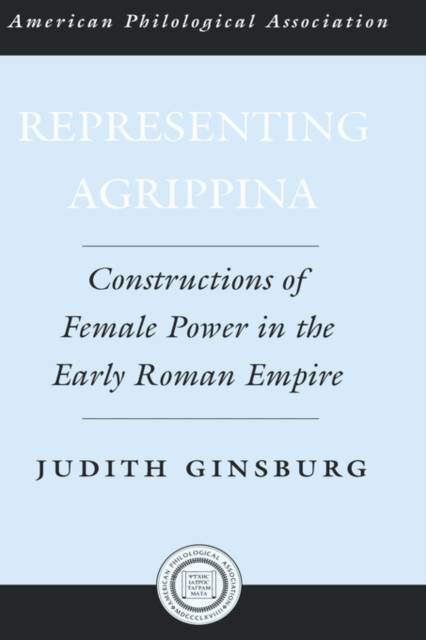
- Retrait gratuit dans votre magasin Club
- 7.000.000 titres dans notre catalogue
- Payer en toute sécurité
- Toujours un magasin près de chez vous
- Retrait gratuit dans votre magasin Club
- 7.000.000 titres dans notre catalogue
- Payer en toute sécurité
- Toujours un magasin près de chez vous
225,95 €
+ 451 points
Description
Agrippina the Younger, wife of the emperor Claudius and mother of his successor Nero, wielded power and authority at the center of the Roman empire in ways unmatched by almost any other woman in Roman history. Such, at least, is the portrait of Agrippina delivered by our sources and perpetuated in modern scholarship. In this posthumous work, Judith Ginsburg provides a fresh look at both the literary and material representations of Agrippina. Unlike previous treatments, she seeks neither to condemn nor to rehabilitate Agrippina. Nor does she endeavor to exhume the "real Agrippina" from the embellished or fabricated portraits found among the ancients. Ginsburg trains her focus on the representations themselves. Her painstaking dissection of the portrayals by historians exposes the rhetorical tropes, the recurrent motifs, and the craft that shaped the literary image of Agrippina. The designs, as Ginsburg shows, were more than literary flourishes. They aimed to blur the boundaries between the domestic and the imperial realms, deploying the image of Agrippina as domineering wife and mother to suggest the flaws and instability of the regime, a dysfunctional family entailing a dysfunctional system of governance. Gender inversions at home played themselves out on the public scene as imperial rule compromised by female ascendancy. Distorted stereotypes of the "wicked stepmother," the domineering woman, and the sexual transgessor were applied to underscore the violations of status and disruption of gender relations that characterized the imperial administration. Ginsburg has as keen an eye for visual (mis)representations as for literary ones. The depictions of Agrippina on coinage and statuary provide a stark contrast with the written evidence. She appears as matron and priestess, emblematic of domestic rectitude and public piety, and a central figure in the continuity of the dynasty. Ginsburg incisively demonstrates the means whereby Agrippina's imagery was molded both to serve the interests of the Julio-Claudian regime and to advance the ends of its critics.
Spécifications
Parties prenantes
- Auteur(s) :
- Editeur:
Contenu
- Nombre de pages :
- 160
- Langue:
- Anglais
- Collection :
- Tome:
- n° 50
Caractéristiques
- EAN:
- 9780195181418
- Date de parution :
- 01-12-05
- Format:
- Livre relié
- Format numérique:
- Genaaid
- Dimensions :
- 156 mm x 234 mm
- Poids :
- 403 g







